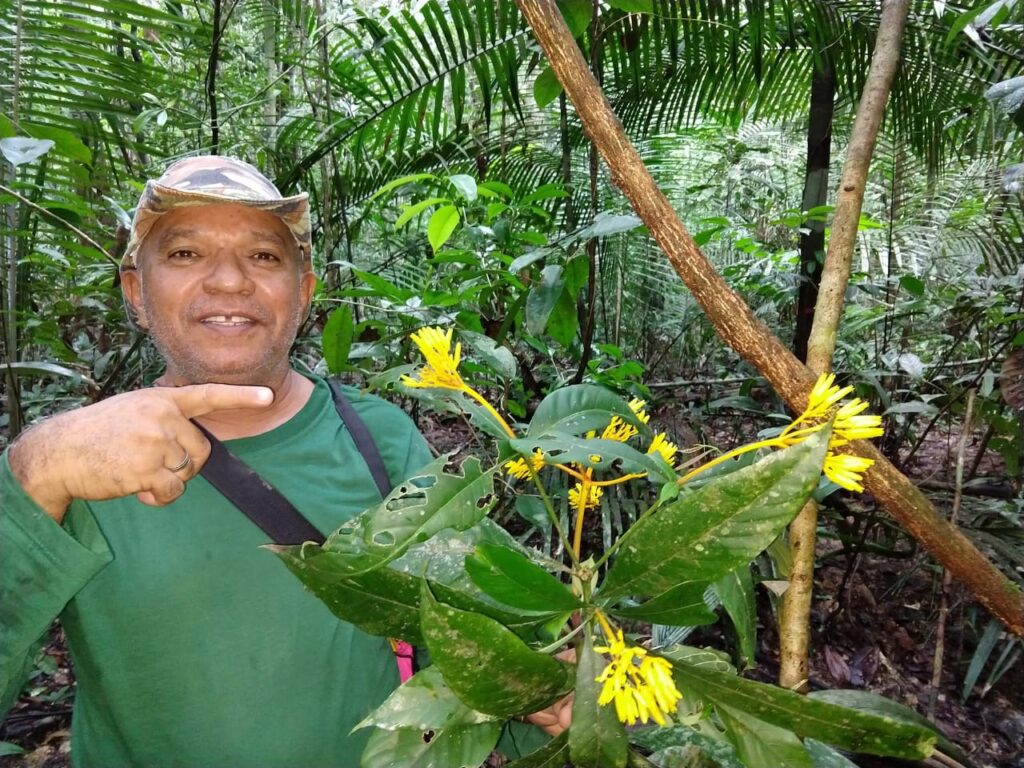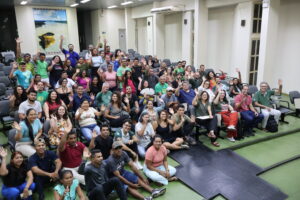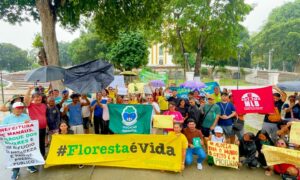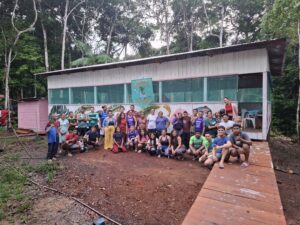By Andressa Scabin
Paulo Apóstolo Costa Lima Assunção, known by his friends as “Paulo Boca” was born in 1956 in Marabá, Pará. During the 1980s, the young Paulo worked as a gold miner in Serra Pelada, before he gathered his savings and took a boat to Manaus. His idea was to buy goods in the Manaus Free Economic Zone and to open an electronics store in his homeland, but on his first day in Manaus, he was robbed and thieves took all his money.

Shortly after, Paulo heard through some friends that the Biological Dynamics of Forest Fragments Project (BDFFP) at the National Institute for Research in the Amazon (INPA) was hiring field assistants, the so-called ‘mateiros’, and he decided to apply for a position. It was then, in 1986, that the career of one of the most recognized amateur botanists (parabotanists) in the Amazon began.
Paulo stood out on one of his first assignments, when working on a subproject led by researcher Scott Mori from the Botanical Garden of New York, a specialist in the Lecythidaceae – the botanical family that includes the Brazil nut tree. During this work, Paulo contributed to practically double the number of species described for this family in the Amazon, according to Mike Hopkins, INPA botanist, in an interview for the newspaper Folha de São Paulo.
In 1993, he was hired for the Ducke Reserve Flora Project where he worked for 6 years with researcher Mike Hopkins. As a member of this team, he helped produce one of the most important references for the identification of Amazonian plants, the “Flora of Reserva Ducke: Guide to the identification of vascular plants in a terra-firme forest in central Amazonia.”
More than three decades of expeditions in the forests, followed by immersions in the INPA herbarium, meant that Paulo accumulated a vast experience in the identification of plant species. The combination of his different view of the forest and the scientific knowledge he acquired in a self-taught fashion, through botanical collections and in conversation with various researchers, made Paulo one of the most sought-after parabotanists for plant identification anywhere in Brazil, and he worked extensively with multiple research projects and environmental consultancies.
Despite not having had the opportunity to graduate at a higher level, Paulo’s work helped to train dozens of masters and doctoral students, and enabled the publication of important scientific research, which presented the immense diversity of the Amazonian flora to the whole world. Beto Vicentini, a researcher from INPA said, “Paulo was not trained at them [universities], but was a professor at them”.
In the Middle Juruá, he was responsible for the identification of plant species in three doctoral projects: the research by Joseph Hawes on the fruits produced by trees in flooded and unflooded forests, the investigation by Yennie Brendin on the carbon storage potential of floodplain forests, and Andressa Scabin’s research on the effect of hunting for wild animals on forest regeneration and carbon stocks in upland forest. “What seemed like an impossible mission, we did! There were more than 13,000 marked and identified plants belonging to about 850 species, which were sampled in 7.5 hectares distributed over an area whose river distance was approximately 800 km!!! We travelled by boat, speed-boat, canoe and even quad-bike to access the plots in the city of Itamarati! Everywhere we went, Paulo was known as the guy who knows all the plants”, says Andressa Scabin.
On January 12th 2021, we lost to COVID-19 our great friend and teacher Paulo Boca. Brazilian botany is in mourning. Professionals like Paulo are very rare, and require a lifetime of dedication to be trained. However, Paulo’s legacy will forever remain not only in all the science he helped to produce, and in all the researchers he trained, but also in the young people who he inspired. It is in these young people that our hope lies – that professionals will emerge to continue this differentiated view of the forest, and whose knowledge will be built on intimacy, admiration and curiosity for the forest.
Among these young people is Paulo Samuel Assunção, 22-year-old, Paulo’s middle son, who already followed in his father’s footsteps and had the opportunity to accompany him on some expeditions. In his words, “I decided that I want to pursue my father’s career. I know it will be difficult and I don’t even pretend to be as good as my father, but I will dedicate myself to the maximum and enjoy the master I have at home”.






